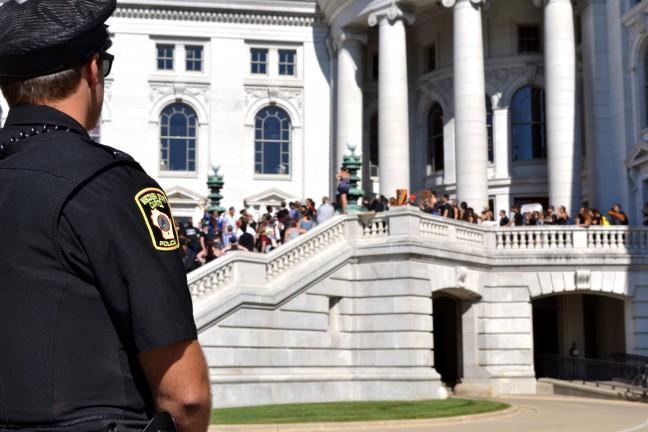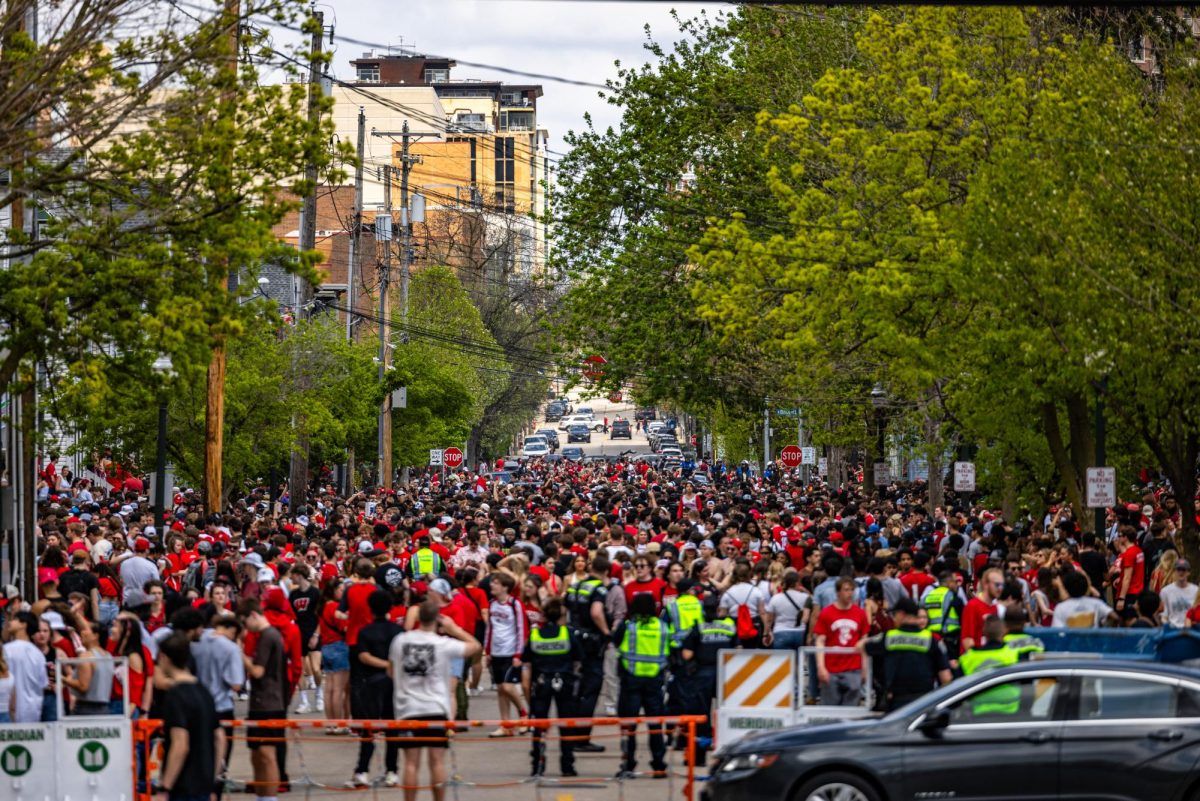The University of Wisconsin Police Department and Dane County Sheriff’s Office are both updating their respective active shooter trainings in response to gun violence that has taken place across the nation over the summer.
In light of the recent mass shooting in Orlando that killed 49 people and the shooting in Dallas that killed five police officers, UWPD spokesperson Marc Lovicott said UWPD will release a revamped active shooter video this fall.
Dane County Sheriff’s Office formally introduced a new active shooter training program in Spring 2016. Deputy Josalyn Longley, DCSO’s emergency preparedness coordinator, said more people started to become a part of the program during the summer when shootings started happening.
In photos: Madison community grieves, shows support for Orlando victims
According to a 2014 Federal Bureau of Investigation report that examined active shooter situations from 2000 to 2013, 60 percent of active shooter incidents ended before law enforcement arrived. By the time the police do arrive at the scene, the shooting is largely done, meaning the people on the scene are the real first responders, Longley said. She said this is why training for these sorts of situations is important.
UWPD spokesperson Marc Lovicott said their new training video was prompted by increasing gun violence across the nation. UWPD has been doing active shooter training for students for years and encourages them to follow the “Run, Hide, Fight,” approach, where fighting back against a potential threat is the last resort, he said.
UWPD responds to questions about safety in an active shooter situation
Students can get more information on UWPD’s website on what to do in the event of a shooting, Lovicott said. Students and other community members can also fill out an online form to have officers come into a classroom, group or organization to do in-person training, he added.
Longley said the purpose of DCSO’s new active shooter training program is to have community members think about what they would do in the event of an active shooter situation.
“[This program] is really about talking with people and letting them know they can survive these situations and tell them that they have options,” Longley said.
City officials stand in soldarity in response to Dallas shooting
Longley said the program is a seminar-style presentation that tells people a brief history of active shooter events and ways to survive them.
Similarly, the Madison Police Department also provides training for the community, MPD spokesperson Joel DeSpain said. MPD uses the program Civilian Response to Active Shooter Events, or CRASE, which offers a PowerPoint lecture, first-aid training, hands-on defensive tactics and scenario-based training.
Both MPD and DCSO meet with businesses, churches, schools and other groups throughout the community to provide trainings.
Part of MPD’s program is to use a real gun with blanks so people know what a gun sounds like when fired and recognize it as a signal to start moving away from the threat, Sgt. Shawn Engel said.
Due to policing jurisdiction, Engel said MPD does not directly offer active shooter training for UW students, but will assist in any training if UWPD asks for any additional help.
One program the DCSO also uses is the A.L.I.C.E program, which stands for Alert, Lockdown, Inform, Counter and Evacuate, offers a more proactive approach to dealing with an active shooter. In a passive versus proactive approach, Longley said it is more likely that someone who deals with the situation proactively will survive.
It is also important for people to familiarize themselves with their surroundings by knowing exits and possible escape routes, Longley said. She also recommended that people think of what kinds of things could be used as weapons.
The DCSO program has already had lasting effects on the Dane County community, Longley said. Many businesses Longley has worked with have already began crafting their own emergency plans and what to do in the event of an active shooter.
“We need to be going out and having these conversations with people and make them think ‘what can I do?'” Longley said. “We want people to know that they have options other than sitting in a corner, waiting and praying for the cops to get there.”















